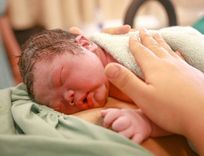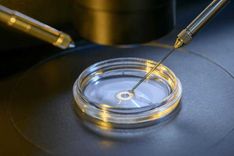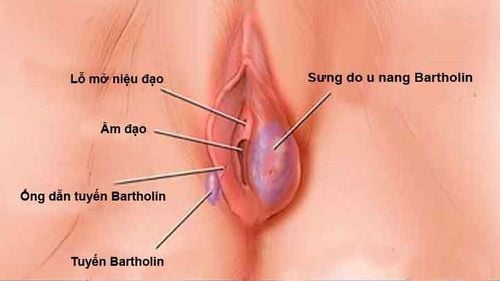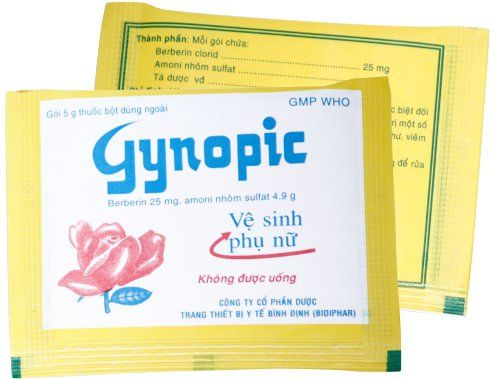This is an automatically translated article.
Cleaning the private area after aspiration or after a miscarriage is an important step to help a woman's body recover quickly and limit the risk of infection.1. What is a miscarriage?
A miscarriage is when an embryo or fetus is expelled from the uterus before 20 weeks of gestation. Usually, the first sign to occur is heavy vaginal bleeding accompanied by abdominal or back pain and cramping.Depending on the gestational age at the time of miscarriage, these symptoms can last for just a few days, like a normal period, or up to three or four weeks. If you develop symptoms of a miscarriage, see your doctor right away.
The doctor will diagnose a miscarriage using ultrasound to check if the pregnancy is developing normally or having a heartbeat.
Your obstetrician-gynecologist will conduct a pelvic exam to see if your cervix is dilated. Your doctor may also draw blood to check your beta hCG levels, a complete blood count (to determine how much blood has been lost), and your Rh factor (to check for Rh incompatibility). If your Rh factor is negative, you may also receive an injection of Rh immune globulin. Your blood can come into contact with your baby's blood cells during a miscarriage, and this shot can prevent serious problems in future pregnancies.
Even if the miscarriage is natural and painless, your doctor will likely want to check in and monitor your health for several weeks or months to make sure you're not experiencing any complications. any complications.
If you continue to bleed for more than 7 days, this excessive bleeding could be a sign that there is still placental tissue in your uterus or that you have an infection. Other signs of an infection may include foul-smelling vaginal discharge, fever, chills, and abdominal pain.
If your doctor suspects an infection, they will likely treat it with a course of antibiotics. In extremely rare cases, the remnants of fetal tissue in the uterine cavity can begin to grow abnormally and form a type of tumor called trophoblastoma.
Several other complications and risks can come from medical treatments such as surgery. About 16% of women who undergo dilation and curettage (D&C) first experience a complication of uterine adhesions, known as Asherman's syndrome. These women may face the risk of a second surgery to remove those adhesions, but fortunately, you will recover and be able to get pregnant again.

Vệ sinh vùng kín sau khi sảy thai là việc quan trọng để có thể phụ nữ nhanh phục hồi
2. What causes miscarriage?
The cause of your miscarriage may not be well known. The following characteristics may increase the risk:Women 35 years of age and older Genetic abnormalities in the fetus Diabetes, high blood pressure or poorly controlled thyroid disease Infections such as toxoplasma or syphilis Alcohol or caffeine abuse, smoking, or drug use during pregnancy Being overweight or underweight Problems with the uterus, placenta, or cervix.
3. How to clean the private area after miscarriage
After a miscarriage, vaginal bleeding is normal. Patients need to observe the color, amount of blood loss and smell so that they can promptly identify abnormalities and see a doctor as soon as possible. Because of this symptom, the hygiene of the intimate area after miscarriage should be done properly so as not to increase the risk of infection after miscarriage.Some hygiene rules after miscarriage should be followed:
Do not put anything inside your vagina for the first 2 weeks after miscarriage, unless directed by your doctor. Do not use tampons, douches, or have sex after a miscarriage. These actions can increase the risk of infection and pain. Use tampons only when necessary. You may experience light bleeding or spotting for 2 weeks. The use of tampons can help monitor blood volume, color. Blood from the vagina will gradually decrease in quantity, turning from bright red to dark red over time. Do not take a bath or swim for 2 weeks. These actions may increase the risk of infection. Shower only. In addition, the same post-miscarriage woman should:
Rest as needed. Slowly start to be more active each day. Return to your daily activities as directed by your healthcare provider. Talk to your healthcare provider about birth control options and choose the most effective method that works best for each person.

Vệ sinh vùng kín sau khi sảy thai đúng cách cần tuân thủ một số nguyên tắc
Please dial HOTLINE for more information or register for an appointment HERE. Download MyVinmec app to make appointments faster and to manage your bookings easily.













